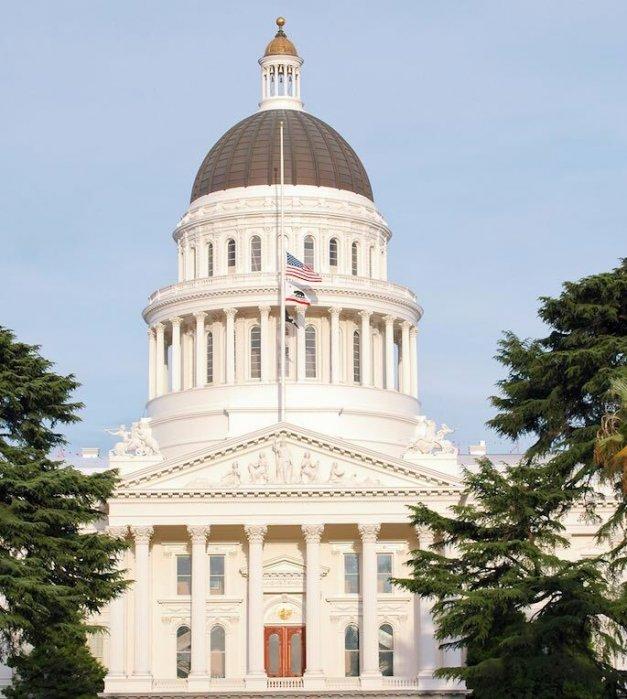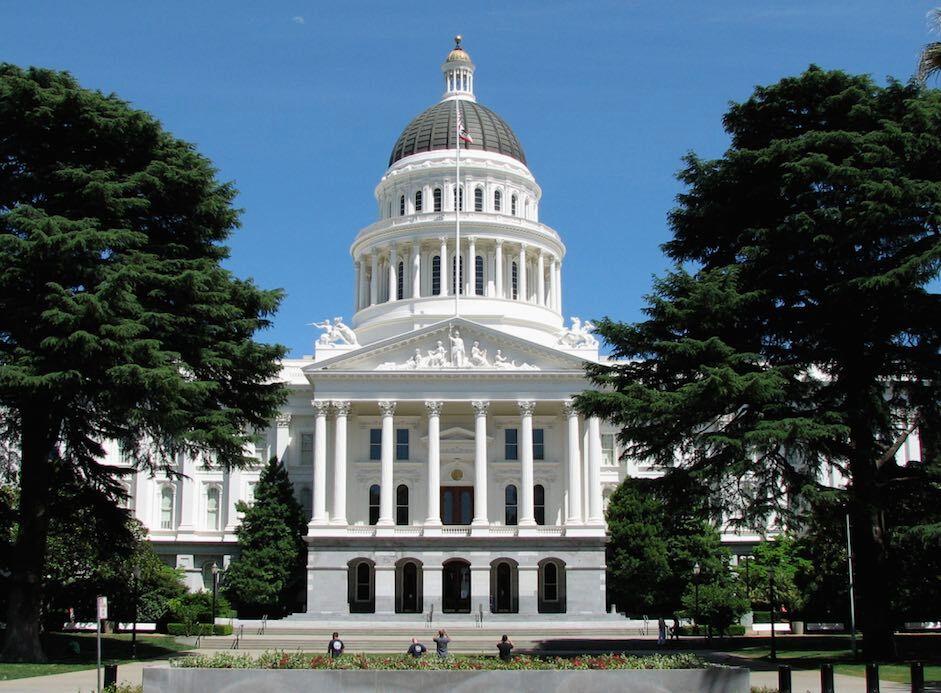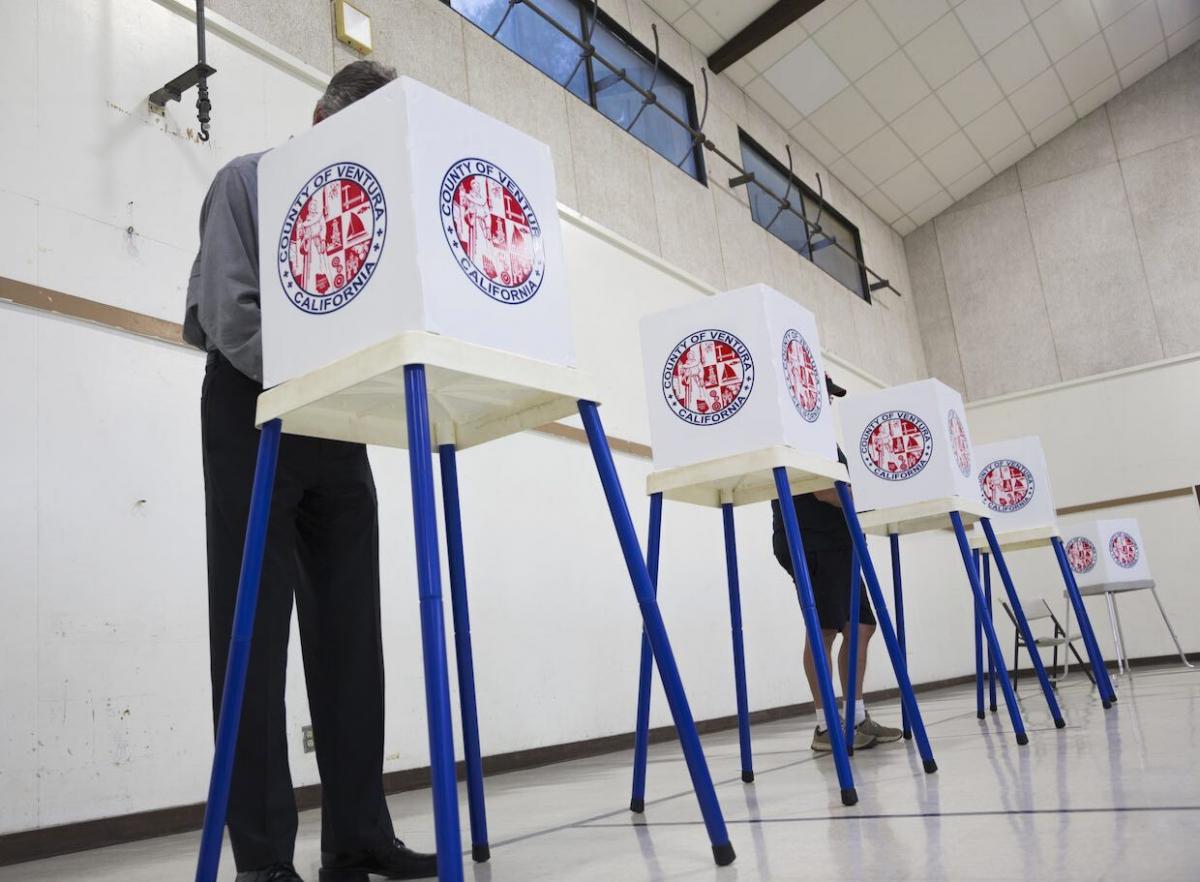2015 Legislative Year in Review
Dan Carrigg is senior director of legislative affairs for the League and can be reached at dcarrigg@cacities.org.
Those who rely on funding from government often wish for more revenue, and in 2015 such wishes came true, with additional billions pouring into the treasury from an improving economy and income tax revenue. Yet given the state’s prior commitments to expand health care for the poor, save money in a voter-approved rainy day fund and allocate school funding according to complex Proposition 98 formulas, most of the surplus was already spoken for.
Gov. Jerry Brown’s continued commitment to stabilize state finances, control costs and establish a stronger foundation to weather economic downturns remains good news for city officials who recall how past cycles of undisciplined state spending led to convoluted financial flips, swaps, raids and borrowing that destabilized local budgets and California’s economy.
Cities also appreciated the governor’s and legislative leaders’ recognition that our deteriorating network of highways and local streets and roads, due to insufficient maintenance funds, is a problem that must be resolved. A conference committee formed during the special session on transportation continued to work on this important issue in the fall.
Significant positive outcomes for the League included the adoption of a new economic development tool for lower-income communities and the passage of a medical marijuana regulatory bill package.
The Budget
Tension had been building since January between Democratic legislators and the governor over his proposed spending levels that were significantly below estimated revenue generated from a growing economy and Prop. 30. This dispute was no surprise. Since entering office in 2011 the governor has been keenly concerned with the dangers of overspending and the vagaries of state revenues, which are overly dependent on the fortunes of the stock market and the wealthy.
Central to the debate was whether the governor was doing enough to combat poverty. With the majority-vote budget approval threshold relegating Republicans largely to the political sidelines, this dispute played out throughout the year in budget subcommittees where Democrats proposed increased funding levels for various programs.
Finally, on June 15 — the constitutional deadline to send a budget to the governor or forfeit salary for each day they were late — Democratic legislators sent the governor a budget that exceeded his spending by $749 million, along with several trailer bills. This was readily acknowledged as a “placeholder” budget so negotiations could continue on other items. The next day, however, the governor and Democratic legislative leaders announced a budget compromise to spend only $61 million over the governor’s spending level.
Despite the reduced funding level, Democratic leaders pointed to successes that included expanding Medi-Cal coverage to eligible children regardless of immigration status and a proposal to establish an earned-income tax program for very low-income residents. The governor also called for two special sessions: one on transportation funding and the other to identify a budget solution to the recent elimination of the managed health-care organization tax.
Positive budget results for cities included the repayment of $765 million in pre-2004 previously owed mandates, the allocation of over $1 billion in cap-and-trade funds per the previously agreed-to legislative formula, appropriations from the Prop.1 water bond, and $20 million per year in local law enforcement grants salvaged after a legislative effort to eliminate them over community relations concerns.
An eleventh-hour administration proposal forcing water districts that deliver substandard-quality water to low-income areas to consolidate with better-performing districts generated concern for some communities. Also left unresolved in June were decisions on allocation of the remaining 40 percent of cap-and-trade funds and the disposition of the administration’s controversial redevelopment dissolution proposal.
The 2015 budget debate highlighted the powers of a governor to dictate terms in the budget process. This authority was enhanced by Prop. 25, which — in addition to allowing for a majority-vote budget — included a provision that requires legislators to forfeit their salary for every day the budget is late. While these provisions have eliminated the lengthy delays of the past, the salary forfeiture provision gives a governor increased leverage.
Twelve-Year Termers Settle In, Leadership Transitions
Since 2010, when voters approved an extension in legislative term limits, a transition has occurred from legislators subject to a maximum of six years in the Assembly and eight years in the Senate to a “new class” of legislators able to serve a total of 12 years in either house. Now legislators eligible to serve extended terms occupy over 80 percent of Assembly seats and approximately half of the Senate. The Assembly will fully transition in 2016, and 70 percent of the seats in the Senate will transition by 2018.
These new legislators view themselves differently than their predecessors. They have more time to settle in and develop policy expertise; they also realize if they make mistakes they will likely still be in office and accountable for fixing them.
In 2015, legislators from the new class moved into the Legislature’s highest posts as three of the four leadership positions changed hands. Assembly Member Anthony Rendon (D-Lakewood), who is eligible to serve until 2024, will soon take over as speaker from Toni Atkins (D-San Diego) who will term out of her Assembly seat in 2016. Assembly Member Chad Mayes (R-Yucca Valley), eligible to serve until 2026, takes over as Assembly Republican leader from Assembly Member Kristin Olsen (R-Modesto) who also terms out in 2016. In the Senate, the transition to leaders with longer terms has not yet fully occurred. Senator Jean Fuller (R-Bakersfield), who terms out in 2018, took over as Senate Republican leader from Sen. Bob Huff (R-Diamond Bar), who terms out in 2016. Sen. Kevin De León (D-Los Angeles) terms out in 2018 and remains as president pro tempore.
New Economic Development Tools Emerge
Progress on establishing new economic development tools continued in 2015 with the governor’s signature of AB 2 (Alejo and Garcia). This measure resulted from a multi-year effort by the League in partnership with Assembly Member Luis Alejo (D-Watsonville) to restore the redevelopment tool as an option for local communities. The bill authorizes the creation of Community Revitalization and Infrastructure Authorities (CRIAs) that would focus their efforts on lower-income neighborhoods and former military bases. The League recognized Assembly Member Alejo as one of its 2015 Legislators of the Year for his leadership efforts over three years to help make this tool a reality.
The passage of AB 313 by Assembly Speaker Toni Atkins (D-San Diego) made additional clarifying changes to the Enhanced Infrastructure Financing District law adopted in 2014. AB 313 also contained several changes requested by the League and city attorneys to address technical issues associated with district formation and operation.
During the session, the League also supported several tax-credit bills aimed at attracting additional private investment to urban areas. AB 185 by Assembly Member Eduardo Garcia (D-Coachella) and Assembly Member Jose Medina (D-Riverside) represented yet another effort to establish a California New Markets Tax Credit to help attract private capital and matching federal funds to spur investment in low-income communities. AB 771 (Atkins) proposed a state income-tax credit of up to 25 percent to rehabilitate historic properties, and AB 428 (Nazarian) offered a 30 percent tax credit for seismic rehabilitation of endangered properties. AB 185 faced challenges securing administration support, and AB 771 stalled for the year in the Legislature; AB 428 reached the governor’s desk, where the governor vetoed it due to state budget concerns.
Medical Marijuana Legislation Comes Together
Two years ago, the League, in partnership with the California Police Chiefs Association, decided that it would be better to draft its own comprehensive proposal on medical marijuana rather than continue to react to legislative proposals that fell short on adequately protecting local control and important public safety priorities. Former Sen. Lou Correa (D-Santa Ana) led the effort in 2014 with SB 1262; although the measure stalled in the last days of the session, it set a template for future legislative action.
With Sen. Correa termed out in 2015, the League and police chiefs turned to Assembly Member Ken Cooley (D-Rancho Cordova), a former mayor and League first vice president, who introduced AB 266. While ostensibly a new legislator, Assembly Member Cooley is a veteran of Capitol politics, having served on the staff of several “old school” legislators who knew how to get things done.
As this issue gained momentum, other legislators introduced proposals as well. A complex legislative marathon of policy and politics followed and ultimately resulted in the passage of three bills that comprise the Medical Marijuana Regulation and Safety Act:
- AB 266 (Bonta, Cooley, Jones-Sawyer, Lackey and Wood) contains the critical local control provisions and most of the core provisions of the regulatory structure;
- AB 243 (Wood) regulates marijuana cultivation and provides a regulatory structure specifically to address environmental impacts; and
- SB 643 (McGuire) contains provisions on criteria for state licensing (including disqualifying felonies), regulates physicians making medical marijuana recommendations and requires a digital seed-to-sale or track-and-trace program for marijuana.
The passage of these bills, all authored by newer legislators eligible to serve up to 12 years, also serves as an example of the potential re-emergence of the Legislature’s ability to take on and resolve complex policy issues. In October, the League board of directors recognized all of these legislative authors with a Distinguished Legislative Leadership Award for their work. The League also recognized Assembly Member Cooley as one of its 2015 Legislators of the Year for his leadership on AB 266 and significant work in overcoming obstacles and helping the package become law.
Outcome of Transportation Funding Effort Is Pending
For nearly a decade, city and county officials have been producing and updating a report that captures the deteriorating conditions of local streets and roads. The decline in available transportation maintenance funds means that local streets and roads are getting worse, not better. The same is true for state highways. An opening occurred in 2015 thanks to Sen. Beall (D-Campbell) introducing a funding proposal in his SB 16 and the governor flagging this issue as well in his January budget document. The League named Sen. Beall, chair of the Senate Transportation and Housing Committee, one of its 2015 Legislators of the Year for his advocacy on this issue and for underscoring the importance of local streets and roads in this discussion.
As mentioned earlier, the League board of directors adopted a resolution to join the Fix Our Roads Coalition. The coalition formed in July when Gov. Brown called the special session on transportation in conjunction with the budget deal he reached with legislators in late June. The Legislature formed a conference committee to meet on these issues during the fall.
Securing more sustainable funding for local street and road maintenance needs will remain a top League priority in 2016.
Affordable Housing Funding Efforts Stall
A major effort led by Speaker Atkins to dramatically expand state resources for affordable housing surprisingly stalled, culminating with the governor’s veto of key legislation.
Early in 2015, the League joined a coalition in support of an effort led by Speaker Atkins to provide additional funding for affordable housing. Other major coalition members included the California Building Industry Association, California Housing Consortium and Western Center on Law and Poverty.
At the beginning of the year many things pointed to something happening. Affordable housing was the top priority of newly elected Speaker Atkins, who had already established a close working relationship with the governor. And the affordable housing needs were obvious. Historically, apart from several housing bonds passed by voters over the past few decades, state funding for affordable housing had been relatively minor. Legislators also widely acknowledged the lack of resources, because over $1 billion per year evaporated with the elimination of redevelopment. Home prices and rents were increasing rapidly, especially in affluent coastal areas. Despite a growing economy, new housing production was lagging. Democratic legislators also identified addressing poverty as their key issue with the governor’s budget.
AB 35 (Chiu and Atkins) and AB 1335 (Atkins) combined would have generated up to $1 billion per year in affordable housing funds. Initially, AB 35 would have increased available affordable housing tax credits by $300 million; AB 1335 proposed a funding mechanism to support a permanent source of affordable housing funding generating up to $700 million per year.
AB 1335 proposed a $75 fee (with $225 total cap) on certain real-estate documents that would fund the long-desired state “permanent source of funding for affordable housing.” Because the measure was a tax, it required a two-thirds vote on both floors and the governor’s signature. Most assumed that the bill would make it off the Assembly floor and be part of an overall deal with the governor — likely in reduced form — at budget time. In June an attempt was made to pass the measure in the Assembly; however, it bogged down amid disputes over geographic fund allocations, competition with other pending tax proposals, such as the one for transportation funding, and political trepidation associated with a tax vote. While this outcome was disappointing, a two-thirds vote was considered a formidable challenge. AB 1335 is being held on the Assembly floor and could still move in 2016.
More surprising was the fate of AB 35, especially after the amount was reduced to $100 million in the final days of the session. This was the speaker’s top priority and the bill received strong bipartisan support; furthermore, it seemed that, in addition to the state’s affordable housing needs, some goodwill had accumulated. The speaker had worked closely with the governor on the budget, climate change legislation and the administration’s redevelopment dissolution proposal, and she was going to be replaced as speaker and termed out of her Assembly seat in 2016.
Despite all that, the governor vetoed AB 35 along with several other tax-credit bills, citing his concern for the fiscal stability of the state budget because of the loss of $1 billion in revenue due to the lack of the extension of the managed health-care organization tax, for which he had called a special session. Presumably, if a solution to the managed health-care organization tax is agreed to in 2016, the governor could revisit the matter.
Redevelopment Dissolution: Déjà Vu All Over Again
One of the governor’s first proposals upon entering office in 2011 was to eliminate redevelopment agencies. After the Legislature and a Supreme Court decision concurred, the Department of Finance (DOF) was placed in charge of the dissolution process. For the past five years, DOF’s administration of the redevelopment dissolution process has been rife with controversy.
Shutting down a 60-year-old community revitalization tool — across 385 agencies generating approximately $6 billion in annual revenue — was bound to be controversial. Yet the disputes were compounded by the lack of an established regulatory structure under a consistent set of rules, no clear policy guidance or priorities on which projects should be salvaged, and weak legislative oversight, leaving the courts as the final arbiter of many decisions.
Redevelopment dissolution controversies flared up again in 2015 when the administration proposed comprehensive and divisive revisions to the process that reopened some wounds and pitted local agencies against each other. The proposals can be organized into three main categories:
- Proposals that offered at least partial solutions to outstanding issues, some of which were of major benefit to specific agencies;
- Proposals of mostly technical and neutral impact; and
- Proposals causing significant harm to affected agencies by overturning court decisions, limiting expected loan repayments and restricting legal due process.
By providing benefits to some and harm to others, the dissolution proposal proved divisive from the outset. The League adopted an “Oppose Unless Amended” position with a focus on eliminating the harmful elements of the proposal, because more than 100 cities were going to be harmed by the effort to undo court decisions and revise loan repayment statutes. Legislators recognized the problems as well and refused to vote on earlier versions.
In May, the administration pulled back on some of the harmful provisions but then added to the mix four non-related budget provisions supported by local agencies. These new provisions had nothing to do with redevelopment and could have been passed with other non-controversial budget items — but served to increase potential legislative support for the overall proposal.
Opposition from the League and harmed cities held off action on this measure throughout the year until the very last day of the legislative session when SB 107, a 104-page bill with the harmful elements modified from earlier versions, was placed into print and moved quickly to the Assembly floor without a hearing. After some debate, the bill passed to the Senate where lawmakers approved it later that night. As expected, it was divisive. Representatives of counties, special districts and those cities receiving specific benefits in the bill supported it; a handful opposed it. Because the harmful elements remained in the bill, the League testified in opposition to the measure in the only hearing on the bill in the Senate Budget Committee and helped get a major clarification on loan repayment amounts into a letter the author filed with the Senate Journal.
As this divisive chapter of the redevelopment dissolution process closes, it remains to be seen how DOF will administer the new provisions and whether controversies will subside or continue through the remainder of the governor’s second term.
Climate Change: Governor Looks to Global Leaders
Gov. Brown opened his January inaugural address following his re-election by outlining what had been accomplished and stressed the importance of fiscal stewardship and saving for the next downturn while providing the necessary funding for the major reform initiatives adopted during his first term. These initiatives include shifting state prisoners to the county level, allocating more funding to schools with needy students and expanding Medi-Cal to provide health care to millions of low-income Californians.
The governor also revealed a major initiative to combat climate change. Building on aggressive efforts already underway, he proposed to double the energy efficiency of buildings, increase the state’s goal for renewable power from 33 to 50 percent, and slash petroleum use in cars and trucks by 50 percent. “California, as it does in many areas, must show the way,” said Gov. Brown. “We must demonstrate that reducing carbon is compatible with an abundant economy and economic well-being.”
During the year, Gov. Brown traveled extensively to encourage other world leaders to join California’s efforts to address climate change and to sign a memorandum of understanding to work together to limit the rise in global temperatures from climate change to no more than 2 degrees Celsius by 2050.
While many Democratic legislators supported such ambitious goals, others — especially moderate Assembly Democrats — questioned the feasibility and economic impact of the petroleum reduction targets on low- and moderate-income households. A lengthy standoff occurred over SB 350 (De León), which would enact these goals as statute, and SB 32 (Pavley), which sought to place into statute the greenhouse gas reduction goal (80 percent by 2050) adopted by Gov. Schwarzenegger via a 2005 executive order. Ultimately SB 32 was held on the Assembly floor and SB 350 moved to the governor with the petroleum reduction goal eliminated. Despite this setback, Gov. Brown vowed to continue his efforts to address climate change through various means, including aggressive actions of the California Air Resources Board.
League Initiatives in Other Areas
Other issues important to cities in 2015 also occupied the attention of city officials and League lobbyists.
Elections and Voting. Debates over election and representation issues continued as legislators responded to low voter turnout by attempting to increase voter engagement and expand diversity on local elected bodies to reflect changing demographics. With many proposals introduced, prioritizing was essential. The League sought amendments on election consolidation proposals and supported providing local communities with more options, rather than mandates, when responding to representation issues. The League helped shape and support SB 493 (Cannella), which the governor signed, that allows cities with populations of less than 100,000 to shift to district elections by ordinance, while stopping AB 278 (Hernandez), which sought to mandate all cities with populations over 100,000 to switch from at-large to district elections. The League also opposed — and the governor vetoed — AB 1301 (Jones-Sawyer), which would have required all local agencies to have changes to their election processes pre-approved by the secretary of state.
Employee Relations. Given the significant influence of labor organizations in the Capitol, employee relations is always a busy area of activity. Priorities included stopping additional mandates and proposals increasing costs or eroding local flexibility. While many bills were introduced, concerns were often addressed by collaborative efforts to obtain necessary amendments or by working with coalitions of other public and private employer groups to provide decision-makers in the Legislature and governor’s office with solid information on local costs and policy impacts. This strategy resulted in the most troublesome proposals being neutralized with amendments, stopped in committee or vetoed. One disappointment was the governor’s signature on SB 331 (Mendoza), which requires local agencies that have adopted increased transparency ordinances for local collective bargaining to either apply such conditions to all local contracting valued at more than $250,000 annually or repeal the ordinances.
Open Data and Cybersecurity. Policy-makers are struggling with how to balance technological advances and increased demands for easier access to government data with the need to protect personal privacy and avoid disclosures that could reveal public safety vulnerabilities. To prepare for these complex discussions, the League sought out city officials who were leading on these issues to help brief its Administrative Services Policy Committee and also partnered with law enforcement organizations and others with cybersecurity expertise. After significant legislative discussion and lobbying activity, two principal bills were signed in this area: AB 169 (Maienschein) establishes several standards for information that is described by local agencies on their websites as “open data”; and SB 272 (Hertzberg) requires local agencies to disclose the software application or computer system that the local agency uses to maintain various information. Specific exceptions are provided for data that would undermine cybersecurity, personal privacy or public safety. This policy area will continue to evolve in the coming years.
Short-Term Residential Rentals. The proliferation of web-based vacation rental websites as part of the “sharing economy” has provided more options for the traveling public while offering increased income potential for homeowners. Such changes, however, have produced their own set of problems that include losing rental housing stock, undermining the quality of life in residential neighborhoods and creating challenges in collecting transient occupancy tax (TOT). Many communities are updating ordinances and revising methods to better identify these rental units and collect associated revenue. Legislative action centered around two bills. Early in the session, the League opposed and helped defeat AB 1220 (Harper), which would have prohibited the collection of TOT on the rental of such units. Most of the legislative activity, however, centered on SB 593 (McGuire), supported by the League, which is designed to bolster local regulatory efforts by prohibiting associated websites from advertising units operating in conflict with local ordinances and allowing local agencies to “opt in” to a regulatory scheme. SB 593 remains pending on the Senate floor and will need to be moved to the Assembly in January. The League adopted a resolution supporting SB 593 at its annual conference.
Drones. As drone usage increases for commercial, mapping, surveillance and hobbyist purposes, so do the controversies. Disputes involve personal privacy, flying over prisons or schools and interference with public safety response operations. The governor signed one bill on the matter, AB 856 (Calderon), which creates civil liability for knowingly entering the airspace to capture a visual image, sound recording or other impression of a person engaging in private, personal or familial activity. The League and California Police Chiefs Association co-sponsored SB 168 (Gaines), which would have made it a crime for a drone operator to interfere with a firefighting operation or other public safety response. In vetoing the bill, along with two other drone-related bills by Sen. Ted Gaines (R-El Dorado), the governor questioned the need to define more crimes and further impact prison populations and did not deal with the policy issues involved. However, his veto message on SB 142 (Jackson), which authorized civil suits for unauthorized drone flights over private property, indicated some interest in looking at the issue more carefully. Drone issues will certainly return in 2016.
Water and Drought. With the passage of the 2014 water bond, Prop. 1, and initial implementation of historic legislation affecting groundwater management, the League focused its efforts on helping city officials understand these important measures. League staff hosted webinars, prepared online briefing documents and visited various League divisions to inform city officials about opportunities for funding and the changes affecting groundwater management. As drought conditions worsened, the League also convened webinars with administration officials and distributed information on the governor’s 25 percent statewide water conservation mandate. In the Capitol, the League obtained amendments to retain some local flexibility in a bill allowing the use of synthetic grass in residential landscaping.
Stormwater. California’s stringent water quality laws, coupled with the drought, have highlighted the need for local agencies to have more viable ways of funding the removal of garbage and toxins from stormwater before it flows into streams, rivers and the ocean. The League and other local agencies worked with Assembly Member Rich Gordon (D-Redwood City) on AB 1362, which was intended as a vehicle for solutions. Most of the challenges associated with this issue relate to interpretations of Prop. 218 (2006), which excludes “water, sewer and refuse collection” from its more restrictive provisions, but which the courts have interpreted as not excluding “stormwater.” Prop. 218 also came under increased focus mid-year with the San Juan Capistrano decision by the California Supreme Court, which ruled that water agencies were prohibited from establishing increased rate tiers that are not based on the cost of service, but rather as a deterrent for excessive water use. Discussions about how to resolve these challenges will continue in 2016.
Cap and Trade. With revenues now beginning to flow in the billions, accessing cap-and-trade funds has become a top priority for local agencies. The Legislature approved an allocation formula in 2014 whereby 60 percent was allocated to specific programs and the remaining 40 percent subject to annual legislative negotiations and appropriation. The League partnered with its nonprofit research affiliate, the Institute for Local Government, to provide information to cities about the various programs and how to apply for funding. In the Legislature, the League has continued to lobby for allocations of the remaining 40 percent for programs that benefit local agencies and programs.
Tip Fees and Removing Organics From Solid Waste. Recently adopted legislation increases state goals to reduce the deposit of organic waste in landfills as part of a strategy to reduce methane gas created by decomposing organic materials, which contribute to greenhouse gases. This effort, coupled with the state’s existing 75 percent waste diversion goal, resulted in the California Department of Resources Recycling and Recovery (CalRecycle) experiencing a significant reduction in funding from existing per-ton “tip fees” that apply to disposal of all materials in landfills. Those tip fees also helped fund state programs that assist local agencies with waste reduction programs. The administration floated proposals to increase the tip fee late in the session. The League was extensively involved in discussing this proposal with the administration; though it did not advance, a revised proposal is expected in 2016.
Homelessness. Numerous bills focused on responding to the challenges of homelessness. Legislators perceived the problem was growing, exacerbated by increasing housing prices and lack of affordable housing production and made worse by the elimination of redevelopment. The League supported measures in 2015 designed to: provide additional funding; use “housing-first” approaches that aim to get people off the street before attempting to deal with chronic mental health, addiction or other contributing issues; ensure college dorms remain open for former foster and homeless youth who have no place to go during school breaks; allow for collaborative public-private approaches through joint powers agencies; and provide more flexibility for the homeless when accessing funds to provide temporary housing vouchers. The League also opposed and helped stop several proposals that sought to eliminate local ability to enforce local laws and ordinances. Combating homelessness is expected to continue as a major policy issue in 2016.
Improving the Conditions of Reporting to the State Controller. Several years ago the League’s Fiscal Officers’ Department identified problems with the timing of reports that local agencies submitted to the state controller. This issue was resolved with the governor’s signature on AB 341 (Achadjian), a League-sponsored bill that makes improvements to the process and timelines for cities and other local agencies to submit financial transactions reports, salary data and other reports to the controller. The revised process will save money and time for local agencies and the state while providing more accurate data to the public. The League appreciates the collaborative work of the office of State Controller Betty Yee in this successful effort.
Governor’s Final Actions
Gov. Brown closed the 2015 session on Oct. 11 by signing or vetoing legislation sent to him by the Legislature. From a city perspective, his actions were mixed.
Disappointments included the veto of AB 35 (Chiu and Atkins), which would have increased the availability of affordable housing tax credits by $100 million. With the loss of redevelopment, the state is sorely lacking a major funding source for affordable housing to assist low- and very low-income households that cannot afford market rates. Other disappointments included Gov. Brown’s signature on several measures that erode local land-use and contracting flexibility.
The League appreciates that the governor signed 17 out of 21 bills on which the League requested his signature. The League also appreciates his vetoes of several bills, including those that would have increased costs to local agencies as employers. Positive actions for cities include his signatures on AB 2 (Alejo and Garcia), which establishes a new economic development tool for poorer communities, and the medical marijuana regulatory bill package of AB 243 (Wood), AB 266 (Bonta, Cooley, Jones-Sawyer, Lackey and Wood) and SB 643 (McGuire). These are major policy advancements.
Issues for 2016
The 2016 legislative sessions will bring both certainties and unknowns.
The certainties include new legislative leaders assuming control of three out of four key leadership posts and another influx of new legislators eligible to serve up to 12 years. The outcome of the transportation funding and managed health-care special sessions remains to be decided. Positioning over various ballot measures, which will likely include tax increases and proposals on the recreational use of marijuana, will also influence the process. A $9 billion school bond and a measure requiring voter approval of major infrastructure investments over $2 billion have already qualified for the 2016 ballot.
Although recent projections remain positive, unknown factors for 2016 include the state budget. State revenues depend heavily on income tax and particularly the fortunes of the wealthy. The stock market has shown signs of instability, indicating that the recent multi-year gains may be slowing; the governor also mentioned in his veto message on numerous spending bills the potential of cuts in 2016 if a solution to the managed health-care funding issue is not addressed. Any issues El Niño may bring are yet to be seen.
Whatever comes, the League will continue advocating for resources and partnerships with local agencies, other organizations, the business community and the state that assist cities in responding to urgent needs, providing vital services and enhancing the quality of life for their residents. The League remains a staunch advocate for the benefits of local control and flexibility.
For a summary of progress on the League’s 2015 strategic goals, see Significant Progress Made on 2015 League Strategic Goals.
Photo credits: Bobkeenan Photography/Shutterstock.com (Capitol); Vladimir Mucibabic/Shutterstock.com (car); Hxdyl/Shutterstock.com (construction); Joseph Sohm/Shutterstock.com (voting booths); Iriana Shiyan/Shutterstock (vacation rental); Bibiphoto/Shutterstock.com (drone); Montree Hanlue/Shutterstock.com (lake)
This article appears in the January 2016 issue of Western
City
Did you like what you read here? Subscribe
to Western City








